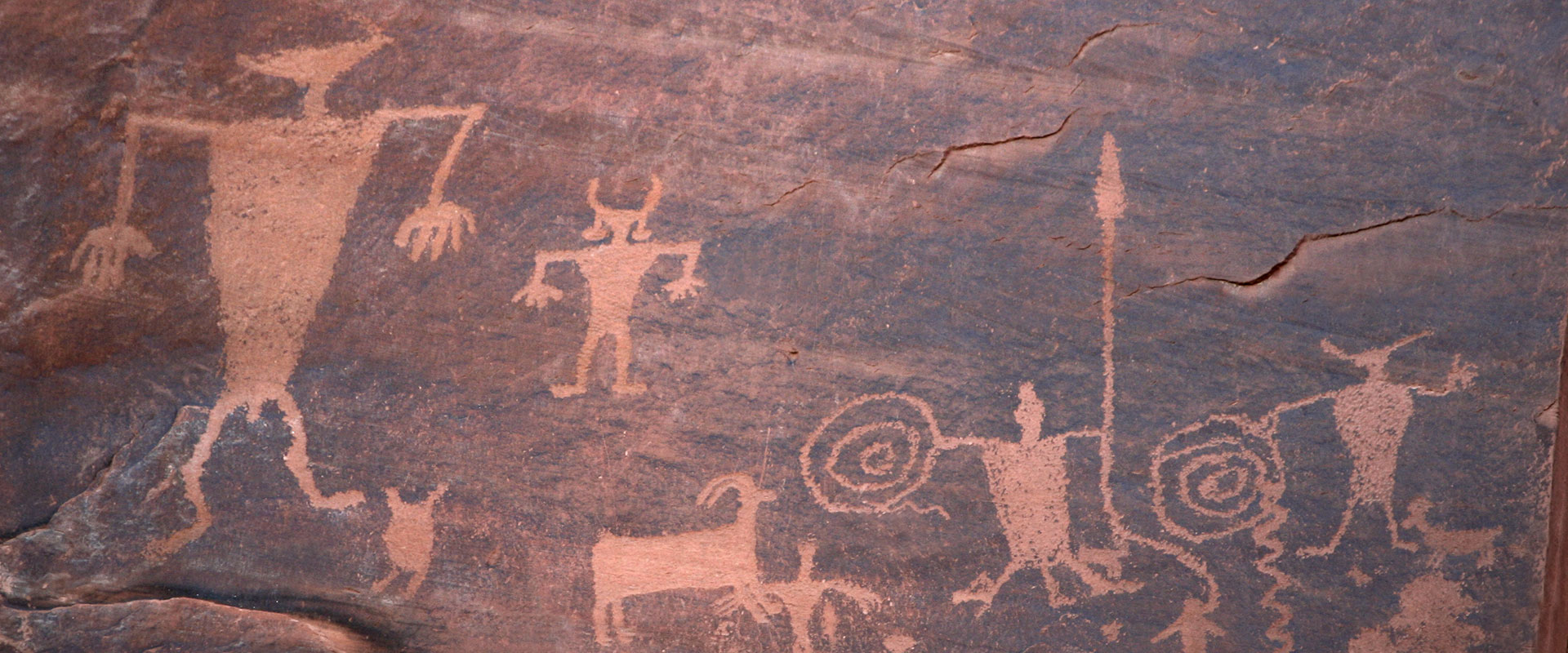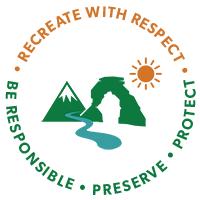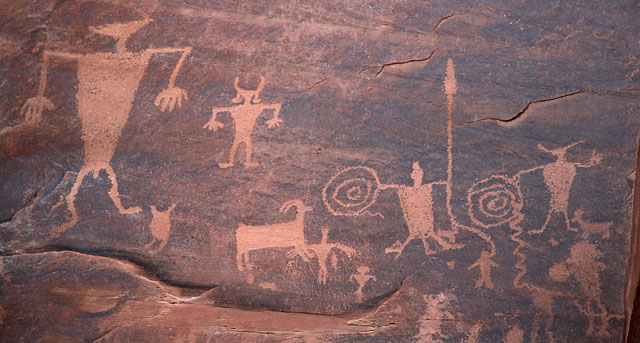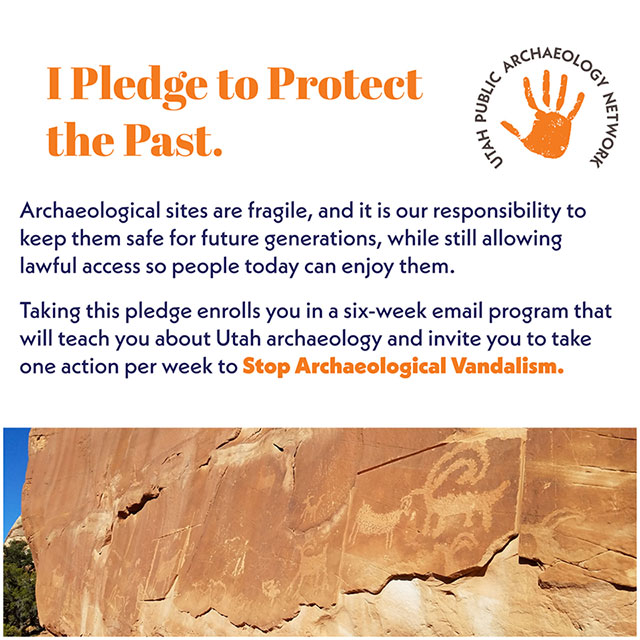From Highway 191 take Utah Scenic Byway 279 (Potash Road) south for 5 miles where you will find an “Indian Writing” interpretive road sign and pull out adjacent to the river. Caution: Watch for highway traffic. Looking 25 to 30 feet up the rock wall on the cliff side of the road you will see petroglyphs from the Formative Period. Look for the line of “paper doll cutouts” and horned anthropomorphs holding shields and abstract images, as well as a wide variety of other animal and abstract images. The panel extends along the road 125 feet.
The round holes carved into the sandstone underneath the left side of the petroglyph panel once held the roof poles of a structure which was excavated by archaeologists prior to road construction. The structure and the rock art panel were easily accessible before the talus slope was cleared away to make room for the road. Continue south 200 yards to the next “Indian Writing” sign. You will find the large bear with a hunter at the bear’s nose and another over its back. At an interpretive pullout approximately 0.75 miles further along the Utah Scenic Byway 279, you can see Indian rock art and dinosaur tracks. On the north side of the road two spotting tubes indicate the location of three‑toed allosaurus tracks in the Navajo/Kayenta sandstone interface. Binoculars are needed to view the petroglyphs located to the left of the tracks at the base of the cliff.
Approximately 7.5 miles farther along Highway 279 is Jug Handle Arch (near the mouth of Long Canyon). Proceed to jug Handle parking area via a dirt road that travels east from the highway. The rock art is located above the parking area to the north.





